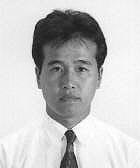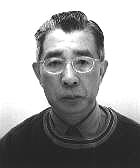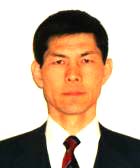Contents: 2024 | 2023 | 2022 | 2021 | 2020 | 2019 | 2018 | 2017 | 2016 | 2015 | 2014 | 2013 | 2012 | 2011 | 2010 | 2009 | 2008 | 2007 | 2006 | 2005 | 2004 | 2003 | 2002 | 2001
2005, 22
Some objective and subjective evaluation methods for room sound, illuminance, temperature and electromagnetic environment
language: English
received 04.05.2005, published 01.08.2005
Download article (PDF, 185 kb, ZIP), use browser command "Save Target As..."
To read this document you need Adobe Acrobat © Reader software, which is simple to use and available at no cost. Use version 4.0 or higher. You can download software from Adobe site (http://www.adobe.com/).
ABSTRACT
It is very important to explore the compound effect of heterogeneous environmental factors for improving the quality of living environment with popularization of electronic and/or information equipments. First, for an objective evaluation, three kinds of environmental factors: sound, illuminance and electromagnetic field of video (or visual) display terminal (VDT) are focused, especially from a stochastic viewpoint. From this experiment, some mutual correlation between sound and illuminance in peripheral environment of VDT was found. And also, another mutual correlation between electromagnetic field and illuminance environment of VDT was obtained. Secondly, for a subjective evaluation, three kinds of environmental factors: sound, temperature and illuminance are especially focused. If an optimum relationship among these environmental factors can be found, it seems that some improvements of our living environment can be discussed from psychological and/or stochastic viewpoint. From these studies, subjective and objective evaluation methods for room environmental factors will be considered.
Keywords: objective and subjective evaluation, living environment, sound, illuminance, temperature, electromagnetic field
12 pages, 13 figures
Сitation: Hitoshi Ogawa, Mitsuo Ohta, Hirofumi Iwashige. Some objective and subjective evaluation methods for room sound, illuminance, temperature and electromagnetic environment. Electronic Journal “Technical Acoustics”, http://www.ejta.org, 2005, 22.
REFERENCES
1. Ohta, M., Ikuta, A., Ogawa, H. Mutual relation characteristics among light, sound and electromagnetic waves leaked from the actual working VDT. Introduction of a system model with nonlinear discrete regression type. J. Acoust. Soc. Japan, 1997, 53(10), 807–810.
2. Ikuta, A., Ohta, M., Ogawa, H. Various regression characteristics with higher order among light, sound and electromagnetic waves leaked from a VDT. A measurement and signal processing in the actual working environment. J. IMC IMEKO, 1997, 21(1–2), 25–33.
3. Ohta, M., Ogawa, H. A methodological trial of regression analysis with higher order correlation between electromagnetic and sound waves leaked by a VDT in an actual working environment. J. EM Waves & Applications, 1998, 12(10), 1357–1367.
4. Ohta, M., Ogawa, H. A trial on hierarchical extraction of higher order correlation between electromagnetic and sound waves around a VDT environment. Practical use of background noise and probability prediction. In PIER34, ed. J. A. Kong, Chap. 12, 285–298, EMW Publishing, Cambridge, 2001.
5. Ohta, M., Ikuta, A., Takaki, N. A new trial of regression analysis with less information loss and its application to sound insulation walls matching to the prediction of response probability distribution. J. Acoust. Soc. Japan, 1988, 44(11), 848–856.
6. Ohta, M., Koizumi, T. General statistical treatment of the response of a non-linear rectifying device to a stationary random input. IEEE Trans., 1968, IT-14(4), 595–598.
7. Stevens, S. S. Psychophysics. Transaction Books, New Brunswick, 1986.
8. Iwashige, H., Ohta, M. An experimental study on the sound evaluation based on the compound effect of environmental factors in a room. Proc. of Noise-Con 94, 1994, 735–738.
 |
Hitoshi Ogawa was born in 1964. He received the B.Eng. and M.Eng. degrees from the Hiroshima University, Japan in 1987 and 1989, respectively. He received his Ph.D. in Engineering from the Hiroshima Kokusai Gakuin University, Japan in 2005. After he worked as electronic engineer and software engineer in the Department of Airbag Engineering of the Nippondenso Corporation, Aichi, Japan from 1989 to 1993, he served as Research Associate, Lecturer and Associate Professor in the Department of Electronic Control Engineering of the Hiroshima National College of Maritime Technology, Japan from 1993 to 2002, then he served as a Lecturer in the Department of Science for Living Environment of the Hiroshima Prefectural Women’s University, Japan from 2002 to 2005. He is now a Lecturer in the Department of Management Information Systems of the Prefectural University of Hiroshima, Japan. His research interest includes control theory, signal and information processing, electromagnetic wave propagation and system engineering for information environmental systems. He is a member of IEICE, ASJ, SICE, ISCIE, IEEJ, IPSJ, JAES and IIAV. e-mail: hogawa(at)pu-hiroshima.ac.jp |
|
 |
Mitsuo Ohta was born in 1928. He received his B.Sc. degree in physics in 1952 and his D.Sc. degree from Kyoto Univ. in 1961. After working as an associate professor at Kobe Univ. and serving as a professor at Fukui Univ. and Hiroshima Univ., he retired from Hiroshima Univ. (as an emeritus professor) and then Kinki Univ. He was named as a fellow of the International Institute of Acoustics and Vibration (IIAV) in 1999 and as a fellow of the Society of Instrument and Control Engineers of Japan in 1996. He has also received the title on Advising Engineer authorized by the Japanese Society of Noise Control Engineering. His research fields of study include microwave, dielectric, ultrasound and electromagnetic wave propagation and control engineering. In recent years he has conducted research in sound and vibration, stochastic systems engineering, signal information processing and EMC. He got two prizes in praise of his paper and his merit from the Acoustical Society of Japan and a prize of environmental protection from Japanese government and also Marquis Who’s Who in Science & Engineering 2005-2006. |
|
 |
Hirofumi Iwashige was born in 1944. He received his B.Eng. degree in architecture in 1967, and M.Eng. degree in 1969 from Hiroshima University. He received his D.E.A. degree in acoustics from Aix-Marseille University, France in 1971. He received his Ph.D. in Engineering from Hiroshima University in 1982. He worked as an associate professor at Hiroshima University from 1982, and he works as a professor at Hiroshima University from 1994. He works in the Laboratory of house environment science, in Graduate School of Education at Hiroshima University. He has received the title on Advising Engineer authorized by the Japanese Society of Noise Control Engineering. He is a member of Acoustical Society of Japan, Architectural Institute of Japan, Japanese Ergonomics Society, Societe Francaise d’Acoustique and IIAV. |
|
